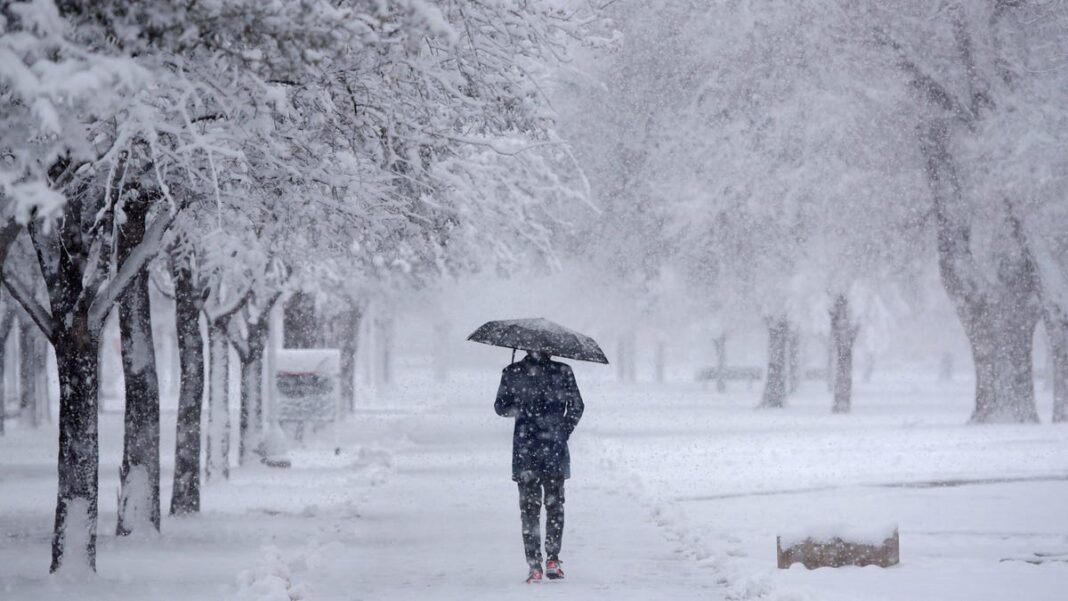Winter 2024 Snow Predictions: When Will The First Snow Arrive?
In late October, many Americans experienced early winter conditions—does this indicate the season’s first snowfall?
Potentially. Due to the vast size and varied geography of the country, determining the “first flakes” of the season can be complicated. While some remote areas may see snow year-round, many populated regions eagerly watch for snowfall as a sign that winter has arrived, and certain warmer locations may never experience snow at all.
Regardless, it’s important to note when snow begins to fall, as winter storms often attract attention long before winter officially starts.
By November, snow is commonly falling at higher elevations across the United States, but focus often shifts to areas downwind of the Great Lakes, where significant lake-effect snowstorms can blanket parts of western New York. Historically, many of Buffalo’s notable snowstorms have occurred in late November and early December due to this phenomenon.
Here’s what you should know about the onset of winter weather in the USA:
What is Considered the First Snowfall in the USA?
The concept of “first snow” is primarily local or regional but generally, a snowstorm will be deemed the season’s first. Occasionally, smaller storms may capture attention due to their unexpectedly early arrival.
Geography plays a crucial role here. Areas with higher elevations or northern latitudes endure cold weather consistently, so any snowfall in these regions doesn’t necessarily align with the traditional start of winter.
“Latitude and altitude are the key elements influencing the timing of your area’s first snow,” stated Deke Arndt, a climate scientist with NOAA, on Climate.gov. “Typically, the further north and higher you are, the sooner the threat of the first snow appears.”
Arndt also mentioned that the highest peaks of the Rockies can experience a year-round risk of snow.
Where Has Snow Fallen This Year?
In an unexpected turn, the first snowfall in the contiguous United States occurred earlier than anticipated. According to the National Weather Service, it snowed in August in California’s Sierra Nevada mountains, which they described as “an unusually early and cold storm, even for elevations above 8,000 feet, marking 20 years since August snow has been reported in these areas.”
Montana also recorded snow on August 26, prompting a warning from the weather service about “winter-like conditions” settling over the higher regions of Glacier National Park. Snow levels were predicted to drop as low as 5,500 feet, suggesting hikers prepare for snow-covered trails and a greater risk of hypothermia.
While August snowfall is rare, September typically marks the beginning of more widespread snow across the western mountains. “By September, regions such as the Washington Cascades, Bitterroot Mountains near the Idaho-Montana border, and the highest Colorado Rockies usually witness their first flakes,” noted Fox Weather meteorologist Brian Donegan.
Does early snowfall indicate a snowy winter ahead? Expert opinions on this vary. University of Utah atmospheric scientist Jim Steenburgh described the correlation between early autumn snowfall and winter accumulation as “tenuous,” suggesting that early snow does not necessarily predict a snowy winter. Similarly, meteorologist Judah Cohen from Atmospheric and Environmental Research stated that the connection between early snowfall and winter’s snowfall is “weak.”
When Will the USA Experience Its First Snowstorm?
You could say that the first snowstorm has already taken place, as Minneapolis recorded a light dusting with 0.2 inches of snow on Halloween this year.
However, more impactful early snowstorms affecting larger areas are expected in the coming weeks.
In major Northeastern cities from Washington, D.C., to Boston, severe blizzards and nor’easters are the typical threats throughout winter. Yet, predicting them more than a few days to a week in advance remains nearly impossible.
Jon Gottschalck, chief of the Operational Prediction Branch of the Climate Prediction Center, indicated in mid-October that the typical storm paths for nor’easters along the East Coast may favor milder weather for the major cities in the Northeast and Mid-Atlantic this winter, possibly resulting in more rain than snow.
However, he cautioned that snowstorms could still occur, based on the specific weather conditions at that time.

